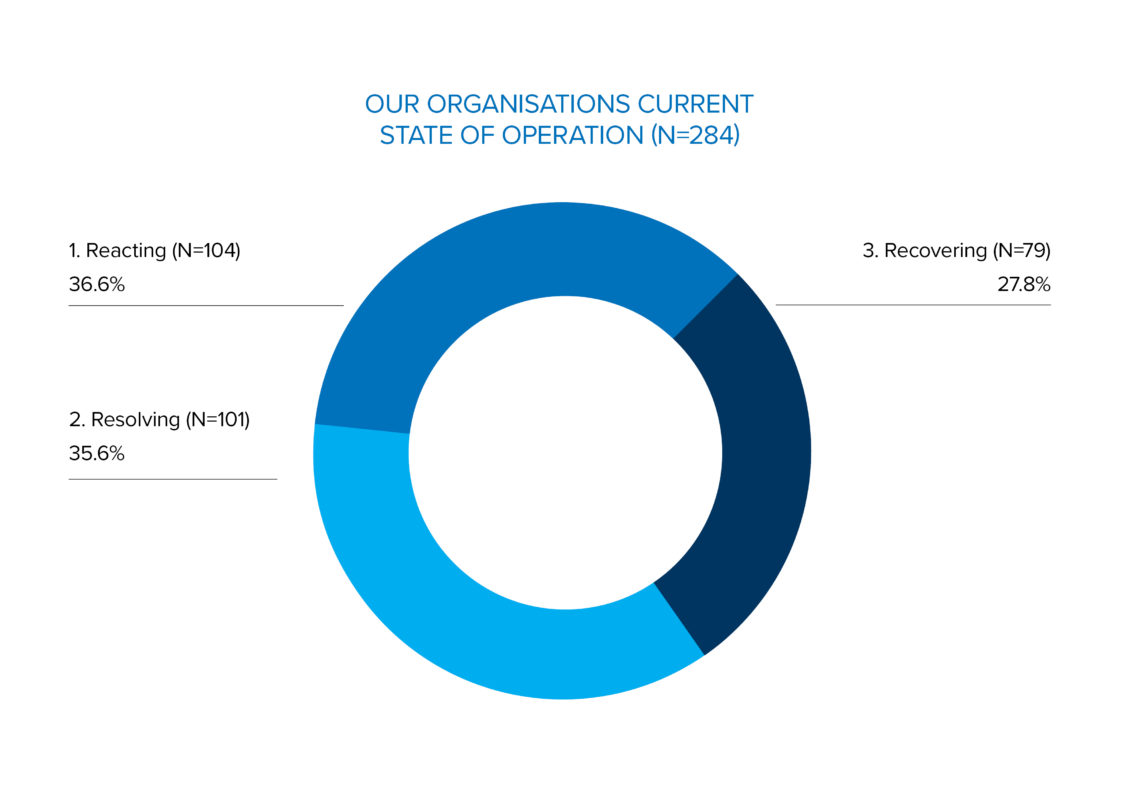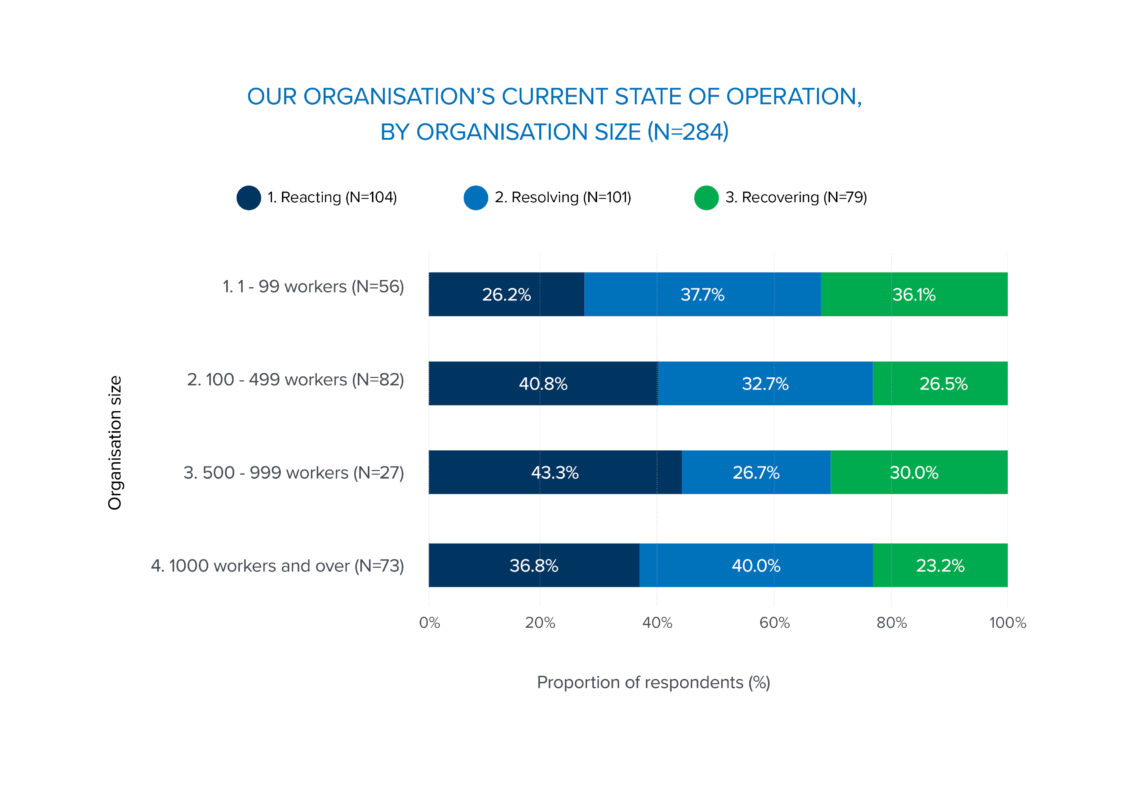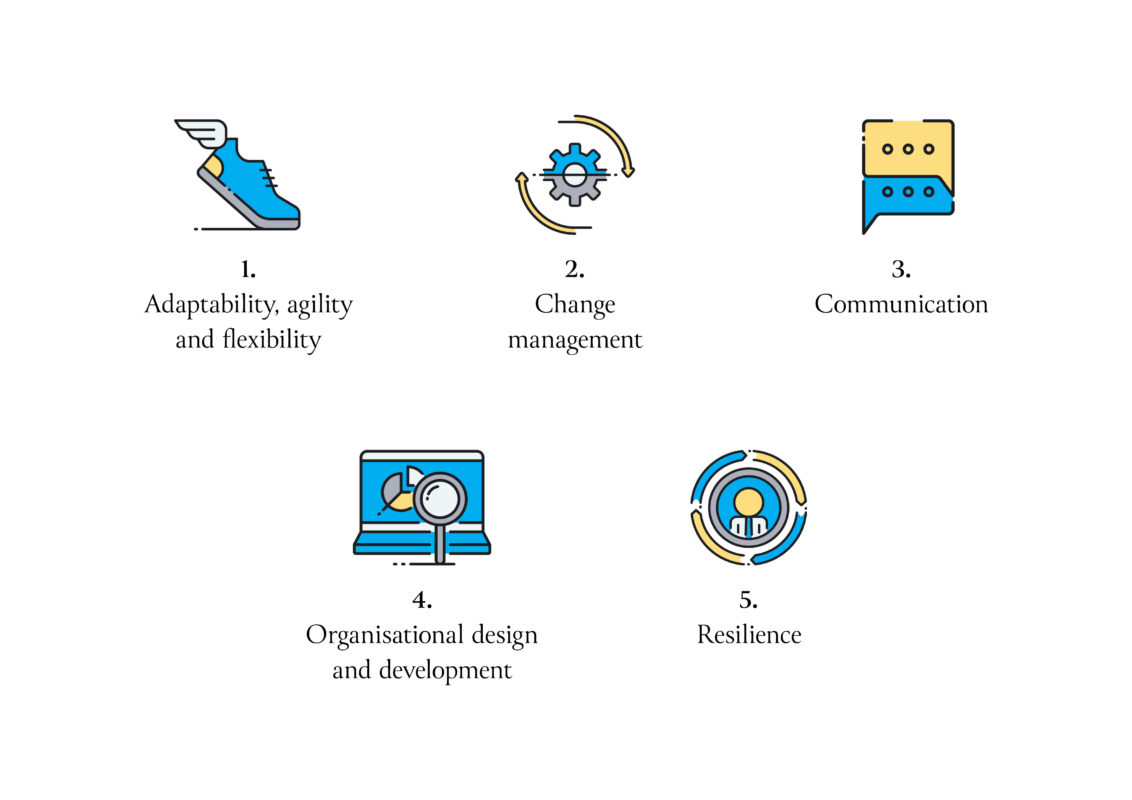Many HR professionals, however, don’t feel prepared to tackle the challenges of 2021 and beyond.
This year the Australian HR Institute has kept its finger firmly on the pulse of HR professionals across the country by releasing a series of pulse surveys to identify what’s working well and what’s keeping them up at night.
Unsurprisingly, the first survey, conducted in April, revealed that HR was stressed about making employees redundant. In May, we saw they were overworked and burnt out as a result. After the dust started to settle, in July, AHRI asked industry professionals to share how the pandemic forced them to change their business operations.
In this latest survey, which includes insights from over 280 Australian HR professionals from 21 August to 2 September, AHRI identified that many people don’t feel they currently possess the right skills to thrive in a post-pandemic workforce. At the same time, it also found that HR professionals feel their influence on the executive team has increased.
So how can they use this new-found influence to better prepare themselves, and their workforces, for the future?
Reacting, resolving or recovering?
Some organisations are running business as (almost) usual while others are still struggling to get through each week. AHRI was able to capture this difference by asking respondents to place themselves into one of three categories: reacting (still responding to shifting conditions), resolving (implementing new operating models) or recovering (making strategic decisions about the future).

Most respondents (36.6 per cent) were in the ‘reacting’ phase. This makes sense. While certain industries have been able to quickly adapt, many are still sorting through the details of operating within a new, or tweaked, environment.
Interestingly, larger organisations (those with over 1,000 employees) were the least likely to be in the recovery stages (23 per cent), compared to those with a smaller workforce.
You might think larger organisations are better positioned to fast-track their recovery, considering they usually have more resources – they can call on larger HR teams for strategic advice, create COVID-safe work environments, and can quickly transition to online working, for example. However, they perhaps don’t have the same level of agility as smaller organisations.
“If you’ve got less than 100 employees, there’s a pretty good chance the CEO will know each individual,” says AHRI’s GM of people and culture, Rosemary Guyatt FCPHR.
“This means they can be tailored in their response because everyone’s wellbeing and capabilities around resilience will be different.”
When employees feel their individual needs are catered, they’re more likely to be in a position to help their business enter recovery mode faster.
“It’s harder and slower to turn around a big ship,” says Guyatt. It’s also harder when more stakeholders are involved. “If an organisation is publicly listed there might be greater conservatism around the direction that an organisation should take.
“Also, smaller organisations will have less of a financial buffer. So if they don’t change quickly, they’re out of business.”
 In terms of industry breakdown, the financial and insurance services industry stood out by far as the farthest along in the recovery journey – with 52 per cent respondents in recovery mode. However, it was a different story in the healthcare/social assistance and manufacturing industries, with only 22 and 17 per cent, respectively, in recovery stages.
In terms of industry breakdown, the financial and insurance services industry stood out by far as the farthest along in the recovery journey – with 52 per cent respondents in recovery mode. However, it was a different story in the healthcare/social assistance and manufacturing industries, with only 22 and 17 per cent, respectively, in recovery stages.
“Healthcare is in crisis. It’s pretty difficult right now for them to transform their organisations. Obviously that will vary from state to state, but Victorians made up a large proportion of our survey [38 per cent], so that would have had an impact.”
For more insights, such as HR professionals’ thoughts on salary bumps and recruitment outlooks for the next six months, download the full AHRI pulse report, ‘Skills for a post-pandemic future’.
Mike CPHR, an HR business analyst in the manufacturing industry, was fortunate that his business was able to continue operating throughout the pandemic.
“We put a lot of effort in at the beginning to ensure we could keep operating, such as ensuring people worked in shifts to keep groups of people socially isolated. We also have temperature testing for anyone who is coming on site.”
HR’s influence is on the rise
HR professionals say their influence on the executive team has increased by almost 15 per cent since the crisis began, and many expect this influence to continue rising post-pandemic.
“This crisis has absolutely engaged HR in a more strategic way,” says Guyatt.
One respondent said his HR team stopped the leadership team from making knee-jerk reactions. “We educated them on alternative pathways and methods of coping.”
Jason CPHR, a survey respondent and HR manager for a business process outsourcing and IT company, considered his organisation in the ‘reacting’ stage.
“Before COVID-19, HR had a fairly good presence with the senior team; I’m on the senior leadership team for the division I’m responsible for. So I sort of already had a seat at that table, so to speak. But during COVID, I did notice that influence increase. A lot of executives called on HR for support with things such as supporting staff from a wellbeing perspective.”
An example of that influence shift, he says, was in the organisation’s new approach to rostering.
“Previously it was decentralised… but HR has now come in and overseen and approved some of that. We’ve had a bit more of a hands-on approach with the roster, more of an operational focus. We weren’t previously that operational focused for this part of the business,” he adds.
What’s more important than gaining influence is knowing how to maintain it.
Guyatt says in order for this to happen HR professionals need to continue to innovate, be flexible and demonstrate strong change management skills, as well as place employee mental wellness at the forefront.
“They need to also take a lead on new ways of communicating while also managing the complexities of the changed Industrial Relations and Employee Relations landscape,” she says. “They need to continue bringing each of those priority areas to the table with either new solutions or leading the discussion on opportunities around these key need areas.”
“For me, adaptability and flexibility are key, underpinned by good communication. These are the skills that support building and managing resilience.” – Rosemary Guyatt FCPHR
Mike says in his organisation HR created a strong sense of influence through the way it communicated with the wider workforce.
Things were changing quickly, so there had to be clear, concise, consistent and regular communication of processes, he says.
For HR professionals, it’s not only important to influence the approach executives take but they also need to take the time to get to know their employees better, says Mike. This will allow them to quickly respond to individual needs while also ensuring optimal business operations.
“That kind of judgment about how far you can go [when making business decisions] and balancing that between the needs of people in the business, that’s where HR has a lot to add,” says Mike.
Jason adds, “For any HR professional looking to grow their influence at any level make sure you’re considered a trusted advisor. That means any information that you’re given is accurate. If you provide incorrect advice to someone, that could be looked upon negatively by those who don’t see HR has a strategic partner.
“The guidance and advice that HR has provided to the supervisors and managers has been greatly appreciated and I would expect this to continue post-COVID-19.”
Preparing for the future
Respondents who believed their organisations were in the recovery phase were 33 per cent more likely to agree they’re prepared for 2021 than those in the reacting stage. However, only 8.8 per cent of total respondents strongly agree they’re prepared for next year.
On a more positive note, the majority of respondents (86 per cent) either agree or strongly agree that they’ll bounce back from the economic impacts of COVID-19 with those in the private sector being the most hopeful.
While economic recovery might be on the horizon, many people fear their workforce and HR teams don’t have the skills required to come out of the pandemic stronger.
Only 36 per cent felt their HR teams were well equipped to manage a post-COVID recovery and 51 per cent felt the same way about employees’ skills.
To bridge that gap in employee skills, Guyatt suggests employers nurture resilience in their employees.
“Resilience means different things to people. One is about being able to respond to and recover from a traumatic event or a major change. Others might say it’s about managing one’s own wellbeing. Others say it’s about having an environment of psychological safety that encourages people to speak up – that will make a difference.
“For me, adaptability and flexibility are key, underpinned by good communication. These are the skills that support building and managing resilience.”
Regarding gaps in HR skills, respondents identified five crucial skills needed for recovery (see below).

“These are all skills that should be being further developed right now,” says Guyatt.
HR professionals might feel like they don’t have the opportunity to hone these skills while navigating the crisis, says Guyatt.
Other barriers to upskilling were: lack of strategic planning, no access to affordable courses, lack of resources and competing priorities.
While many don’t have the time to upskill right now, Guyatt is seeing some who are.
“It might be people who’ve lost their jobs or things feel quiet at work, they’re the people investing in their professional development, for example, by enrolling in AHRI’s Practising Certification Certificate. We know that many HR professionals want to upgrade their capability as a result of the pandemic.”
Now is the time to take stock, says Guyatt.
“Press the pause button to understand what has been working. The majority of our learning comes from application,” she says.
“Note where you’ve had some successes. While the recovery stage is still hard work, there are some silver linings and things that you might want to keep doing. Most organisations have developed new habits. Identify what they are and which ones you want to maintain. That, I think, is going to be really important in the shift from reacting to recovering.”
Want to assess where you’re at? AHRI’s Training Needs Analysis tool is a free, 30-minute online tool that assesses your skills and capabilities and recommends a personalised education and training solution. You’ll be able to gain insights into your own HR capabilities, and configure a roadmap to reach a next stage in your journey and expertise.


I’m wondering what % of HR professionals sit at the Executive table in 2020?
Last time I asked AHRI, a few years back, the figure was around 40%.
I don’t know if HR influence is growing in organisations. Depends on the CEO and board to a large extent and how HR positions itself – strategically or merely engaging in process-oriented tasks? HR needs to grow its influence to be taken seriously and be at the top table…